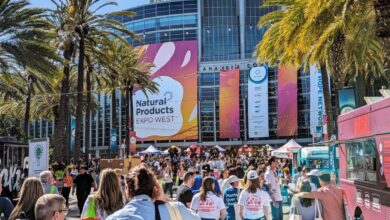
The 2022 B-to-B Dream Team
[ad_1]
TEAM CAPTAIN
BRAND: Cisco
CURRENT TITLE: VP-Global Events
DREAM TEAM TITLE: Chief of Global Event Strategy & Sustainability
WHY WE WANT HER: For her obsession with progress and for her influential playbook, encompassing 25 years of experience.
For Alex Sapiz, there is no single “ah-ha” moment that confirmed she belonged in the b-to-b event marketing world. Instead, her calling has manifested itself in a series of moments that, together, paint a near-constant reminder of the rewards that come with creating face-to-face engagements.
“I love watching the reactions of our attendees when they participate in our experiences,” Sapiz says. “There’s something so special about the opening of Cisco Live’s exhibit floor, or the HUB at Cisco Impact, and you have that crowd waiting outside to walk in and see what you did differently this year. I also love the moment before a keynote starts, when the room is dark and you have thousands of people in a room waiting in anticipation. I still get butterflies in my stomach.”
A traditional marketer at the start of her career, Sapiz took a chance opportunity to fill a temporary role on an events team. After that experience, she quickly pivoted her career to focus 100 percent on events. She decided her starting point would be on the agency side of the business.
“I knew I wanted the breadth and the depth of multiple brands. I wanted to work on large-scale programs. I thought that was going to be an amazing training ground for me, and that essentially led me to seek the agency side,” she says. “That experience prepared me for the job that I have today.”
She spent seven years at George P. Johnson, working on the Cisco account for five of those years before jumping to the brand side to formally join the Cisco organization 10 years ago. Today, as vice president of global events, she leads a vast portfolio within the Cisco global events organization that includes the flagship customer event, Cisco Live, the annual sales kickoff event, Cisco Impact, and the partner conference, Cisco Partner Summit. In addition, she manages a team working exclusively on CXO events for programs such as sports sponsorships, a team working on portfolio planning and event strategy, and another team that focuses on audience engagement, marketing, operations, and technology.
Collectively, the organization delivers around 65 programs externally and, through a strategic meetings management group, on average 1,200 meetings and events internally on an annual basis.
In her role at Cisco, and as an industry peer, Sapiz feels she has a responsibility to help the industry make progress on developing tools and metrics to put hard numbers behind the value of events. She certainly knows first-hand the intangible impact that strategic face-to-face experiences have on the business.
“Our buying cycles are pretty complex; some of our deals are extremely large and it takes a long time for these deals to close, which means within that period of time, you will have hundreds if not thousands of touchpoints,” she says. “Events are just a subset of those touchpoints, and it’s still challenging to draw a straight line between someone who attends an event and a deal that closes, but we have to continue to look at ways that we can quantify that impact. We know we have a tremendous impact.”
Long before the pandemic, the Cisco organization recognized the role of event technology and dedicated a team to it. In fact, in 2008, Cisco was one of the first organizations to launch a virtual event for its annual sales kickoff for 20,000 people. Six years after that launch, Sapiz was part of what you might call the “original pivot” when she flipped that event back to in-person in only 18 weeks.
“In order for you to bring a program of that scale together, you need a team that is absolutely hyper-focused on a single outcome. And that was not just an incredible leadership lesson for me, it taught me resilience,” she says.
The digital pivot of the pandemic opened the door to more valuable data, and Sapiz wants to keep up that momentum and reach. Looking forward, she says her teams are not settling on one definition for hybrid. Rather, they are looking at four or five different, multi-layered models.
“We don’t want to leave behind the tools we’ve acquired. We will absolutely continue to deploy the learnings,” she says. “The challenge and the opportunity are: You’re not getting double the budget, your teams are not doubling in size, and so how do you organize your teams in a way that you can deliver the best in-person experiences that your customers expect from you and, at the same time, fulfill an online presence that captures the richness of the in-person event for an audience that may not come to you.”
Given the latest global climate studies and recent world events, including historic, deadly February flooding in Petropolis, near her hometown of Rio de Janeiro, Brazil, Sapiz says the commitment to sustainability in this next chapter is critical. And while many organizations struggle with setting goals, Cisco has a long history of sustainable practices it is constantly building on.
One such program is a full-scale food donation program developed with MGM in 2016—an industry first. Cisco redirected 2,600 pounds of event food waste from landfills to feed those in need in the local community. The program is now offered to all MGM customers interested in participating. Recent initiatives have included a partnership with Tentree Climate for the virtual Cisco Impact in 2021. Cisco planted trees for each virtual attendee, and in combination with other efforts, neutralized 100 percent of the production impacts of the show.
Over the last two years, the team has delved into research that demonstrates how digital events, and the lack of in-person events, have had a “profound” and positive impact on the environment.
“As we return to in-person events, we have to double-down on policies, protocols and guidelines that we put forward for ourselves to meet in order to continue the progress that was gained over the last two years,” Sapiz says. “I take that very seriously, and I actually have created an organization that runs across all our programs, and we are going to measure that progress on a QBR basis. And there will be goals to meet.”
She wants to see the industry look at sustainability pragmatically, as it would establishing KPIs. Event marketers have to decide how to measure impact, whether it’s in carbon footprint reduction, waste reduction, or working with exhibit houses on the materials used or establishing guidelines around giveaways. “We have to recognize that we made incredible progress by holding back, even though it was unwanted,” Sapiz says of the past two years. “Now that we are coming back, we have to be even more careful about not forgetting some of these ground rules.”
Beyond sustainability, her team is also working to normalize health and safety, knowing those protocols will ultimately influence whether attendees return to in-person or not.
“We have to make this a very normal part of our operating processes, that we account for, not just budgetary, but for the skills and teams that are dedicated to health and safety,” she says. “We need to help people feel comfortable again as they come together, and it’s our responsibility to make that experience feel right.”
We’re feeling it, Sapiz, and your leadership of our Dream Team.
[ad_2]





